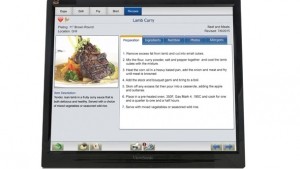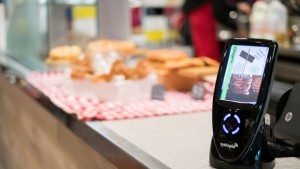Allergen laws: How technology can help businesses comply

It is now six months since allergy labelling legislation for foodservice businesses came into force in the UK.
The law, which requires businesses serving food to follow the retail sector and identify dishes containing 14 allergens, whether that’s via the menu, the website or verbally, has been dubbed a ‘bureaucratic nightmare’ by a group of chefs and charity Allergy UK believes the industry is complying in ‘varying degrees’.
With uncertainty around the laws remaining, BigHospitality asks if technology could play a part in removing some of the difficulties around its implementation and help hospitality operators better comply.
Managing the data
Possibly the industry’s biggest beef with complying with the legislation has been the level of accuracy and detail required. Although operators want to be able to cater safely for diners with allergies, they have found the administration and management of the data needed to adhere to the legislation an extra burden on their already busy operations.
“This is where the right, fit-for-purpose technology really comes into its own,” says Jerry Brand, managing director at procurement software company Caternet.
“Technology can be a key facilitator in easing the burden of managing allergens daily and ensuring without fail, that the data is accurate.”
“Technology serves three main purposes in compliance of allergen laws for hospitality businesses,” adds James England, director at Fourth, provider of cloud-based cost control solutions to the hospitality industry.
“It helps businesses save considerable amounts of time and money on admin and data maintenance, it means front-of-house staff can service and inform the customer quickly, easily and accurately and will help them avoid hefty fines and serving the wrong dishes to customers.”
How can technology help?
There are already a number of back-of-house systems on the market which enable operators to manage that data and crucially ensure that the relevant members of staff are informed, but each one will work in different ways.
Under the legislation, foodservice businesses must make it clear which dishes contain any of 14 major allergens – celery, crustaceans, eggs, fish, gluten, lupin, milk, molluscs, mustard, nuts, peanuts, sesame seeds, soya and sulphites – communicate this to their customers and ensure that those highlighting an allergy aren’t served an ingredient that will make them ill or worse.
So how can your existing system, or ones you may be looking at integrating into your business really help you comply with the law through your daily operations?
Procurement
Technology can play a part from the very start of the process. As England says, suppliers play an important role as they will be responsible for providing allergen information on the produce they are selling to you.
The company has its own recipe and menu engineering module Star Chef Light which integrates into its Star Chef system (details in ‘The all-rounder’ below).
Using this software allows chefs to have accurate information about the potential allergens included in produce they source before they even start creating dishes. When they do come to build recipes on their computer, the system automatically highlights allergens dishes would contain.
“Getting all that to the chef through Star Chef Light eliminates the potential of errors with paper,” says England. “It also means nobody’s having to re-key anything in further down the line.”
Brand’s Caternet also provides information early on in the recipe planning process.
“Using technology that encompasses a full recipe system is essential for those working in the food service sector,” he says. “That way, chefs have access to all of the nutritional analysis and allergen information on any products and dishes they create in line with the new regulations.
“We are also providing a full allergens directory as part of the Caternet F&B system of all of the products that the user purchases and an ‘allergens service alert’ for the day’s menu production to identify items on the menu which contain allergens – so that users have it for service staff as well as for the consumer.
“The ability to ‘tag’ allergen information on the menu itself is also a useful tool to have because it means you can also provide visuals for screens and other media for display purposes.”
EPoS
The menu’s created and the creator (the chef) knows what his or her dishes contain, but how do the rest of the restaurant’s staff know and crucially, how can that be communicated to the customer?
EPoS systems can help if you choose one which can integrate into a recipe management system and/or can be adapted to highlight allergens on dishes at the time of ordering as well as communicating accurate customer requests to the kitchen.
Lightspeed POS, for example, allows every single ingredient that makes up a dish to be listed on its system so front-of-house staff can answer any customer questions at the point of ordering. The technology also allows staff to create profiles for regular customers and record their dietary requirements.
“Customers are never guaranteed the same waiter/waitress for every visit but technology can fill the gap,” says Jerome Laredo, VP EMEA and Asia at Lightspeed POS
“When the customer’s order is taken at the table, an order note is sent to the kitchen which includes the customer’s allergy, making kitchen staff aware. With the busy nature of restaurants I really think technology in this instance works better than shouting across to the noisy kitchen.”
Kitchen management
The order’s through to the kitchen, but how do you fool-proof a dish’s journey through the kitchen, onto the pass and out to the table?
Kitchen management provider Call Systems Technology’s ConnectSmart Kitchen 5 system, is able to clearly indicate on the kitchen display system when a dish modifier, such as an allergen, is put through the POS as menu items. The system uses specific colours or fonts to alert chefs to allergy requirements in an order, to ensure it is quickly identified.
The company has also created TeamAssist, a customisable training tool which can be used as a standalone solution back-of-house, or as part of its ConnectSmart Kitchen solution (the system is also compatible with Star Chef in 'the all-rounder' below)
“TeamAssist works with the chefs to communicate dish specifications, including allergen requirements throughout the whole kitchen,” explains CST commercial director Ashley Sheppard. “The beauty of the system is that it can also be used to educate front of house teams on allergens, simply by using a separate display.
“TeamAssist runs training videos for chefs and new team members, alerting them to the correct procedures to follow when catering for customers with specific allergies. Chefs can opt to have a dedicated tab on TeamAssist specifically for allergens, containing the most up-to-date guidelines and information.”
Payment systems
They may signal the end of a customer's experience in a restaurant, but even cashless payment systems can help restaurants to better cater for those with allergies.
Chris Lyons, managing director at Systopia International explains: "By investing in a cashless payment system, such as those provided by Systopia, caterers will have access to extensive sales data which will show exactly how many customers are purchasing allergy-free items, as well as what the most popular dishes are. Using this information, operators can guarantee they have efficient stock levels to meet customer demand and amend their menus accordingly to include more / less allergy-free items depending on footfall.
“As well as this, through a central database and individual user profiles, cashless payment systems can highlight which customers have intolerances and what their dietary requirements are."
Lyons says having that access on a central database allows restaurants to not only keep a record of customers with allergies and intolerances, but can help with promotion of allergy-free dishes to them next time they come in.
"This creates an effective communication channel that not only allows caterers to drive sales of their allergy-free items, but also helps to build customer loyalty with a personal approach that matches the dietary requirements of individual customers," he adds.
The all-rounder
For the restaurant or operations manager who wants a complete technological solution to managing allergen information there is Star Chef.
Fourth’s cloud-based master data system for all product ingredients and recipe information can be used by both independent restaurants and groups (Avocado, Stonegate and Casual Dining Group are current users).
It works by enabling the restaurant to profile ingredients and record allergen information against each one.
“It means when you’re building recipes and putting multiple ingredients together in many different recipes all of them automatically take the allergen information from the ingredients’ list and automatically do the job of telling you what allergens they contain,” says England.
What makes Star Chef so helpful in allergen law compliance, however, believes England, is the fact that it can be integrated into any other system – whether back-of-house or customer-facing.
“Star Chef has a comprehensive way of allowing allergen information to be accessed by any number of third party providers. It can be integrated into apps, customer websites, digital menu boards and EPoS,” he says.
“It really drives at the heart of how technology helps with allergen law compliance, because it can update information everywhere. Otherwise, you’re having to re-key information in to every system and that’s ridiculous.
“Companies who are using this already love it, because they are saving a fortune in administration of these separate systems where they have to profile the allergen information.”
However, England does have a disclaimer – the system will only work well if the data is input correctly first time.
“The key is to do one job properly once and that’s going to the effort to record allergens against an ingredient, whether that be sulphites or gluten, or whatever,” he says.
“Do one job once and maintain it. It’s worth that investment because it saves time manually, but means the information is readily available for everyone to access, have a lovely time and not die”.
Is it foolproof?
So, technology has its obvious merits in managing allergen law compliance, but will it ever be a more secure option than verbal or written communication between customer, front-of-house and kitchen staff?
“Technology is by far the most reliable option to ensuring allergy requests are met and definitely more reliable than paper,” says Sheppard of CST who underlines the effectiveness of instant updates through systems such as CSK, meaning no old or out-of-date information is held, “which is a common problem when a business relies solely on paper,” he adds.
However, England believes technology will only work for the hospitality sector if used in the right way.
“It’s important that technology complements verbal communication, because this is a people business,” he says.
“Technology will enable customers to answer their own questions, yes, but equally technology needs to support the human touch.
"There are plenty of people who don’t want to go onto a website, or onto an app and will want the human touch, but if technology can support the manager or front house staff who's asked by a customer ‘what gluten-free dishes do you have, I can’t read the menu in the window because I’m short sighted?' the manager can instantly press one or two buttons and can help, in human form, tell this person, 'we can offer you this and these are the ingredients in it'.
"Used properly these types of technologies support any business in being able to provide the information to staff and customers quickly and easily, helping them to avoid hefty fines and providing accurate information to customers which can put them and the business at risk".




































